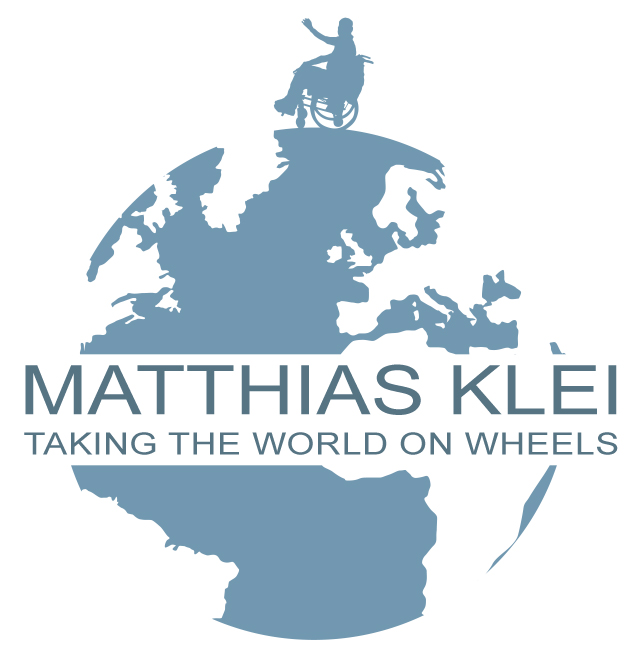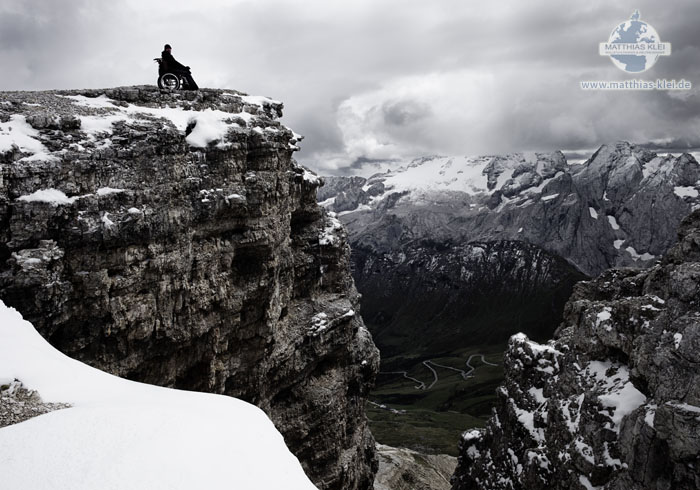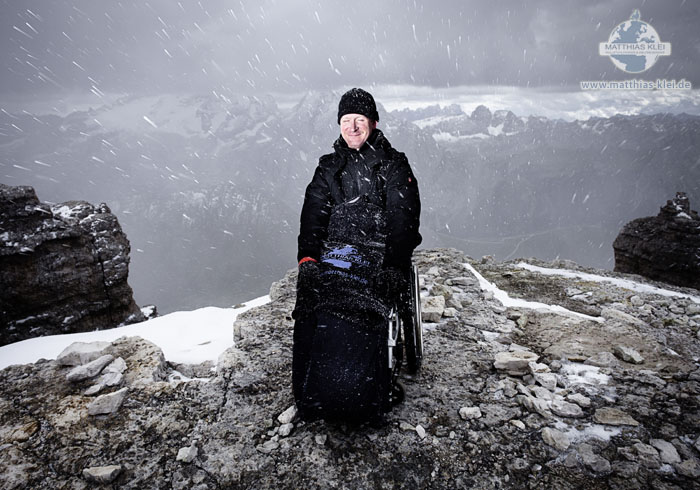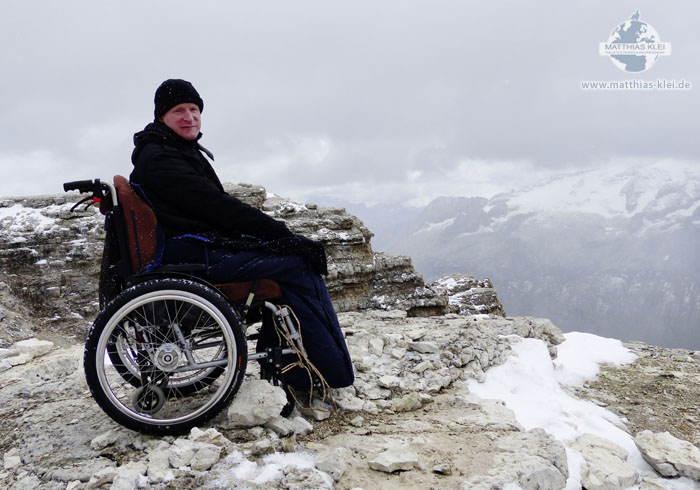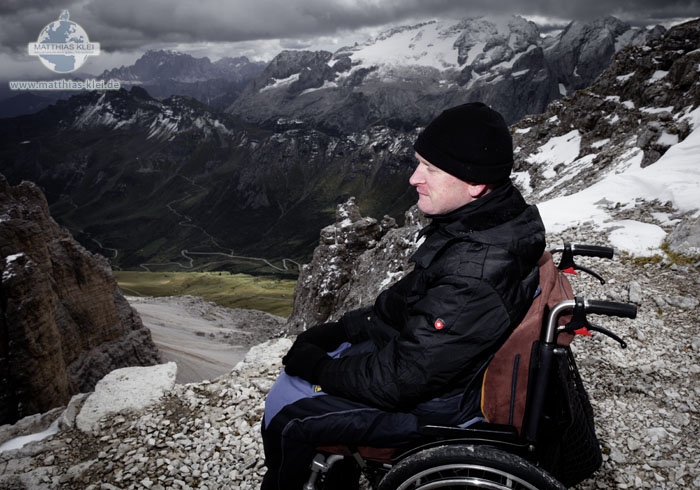How did the wheelchair user get up the mountain?
I am constantly asked: How did this beautiful picture of you on the mountain come about? Many people assume that I was taken up the mountain by helicopter or that it is a photo montage. But the picture is real, and here is the story behind it:
In 2012, I realized that I needed a striking promotional image for my projects. I discussed possible photo opportunities with my photographer, Daniel Fort. Since I had already been to the viewing platform on the Zugspitze twice, this idea seemed obvious. We both thought it would be an ideal spot for an expressive photo, but I hadn't yet found a way to get to the golden summit cross in my wheelchair. We did some research and came to the conclusion that we still wanted to go there.
The plan was to take the cable car up to the Münchener Haus and from there, with the help of mountain guides who would pull me up and carry me, climb the last few meters to the golden summit cross. The whole thing would have made a beautiful film and, in the end, certainly a fantastic photo. But as is often the case with plans, everything turned out differently in the end.
After intensive planning and research, the time finally came in September 2013. With two assistants, I set off for Austria, with a stopover in Strasbourg in Alsace. There we took part in the Freedom Drive. This is a gathering where people with disabilities from all European countries have the opportunity to meet members of the European Parliament's intergroup working group on disability. The focus is on everything related to people with disabilities and their inclusion.
We then continued on to Austria. Our next destination was the Hotel MyTirol in Biberwier near Ehrwald. There we met Daniel and his father, both experienced mountaineers from Munich, who were also going to help us. Now there were five of us.
The next day, we met two mountain guides we had contacted beforehand for the Zugspitze region and got to know them better. The meeting was naturally also about the details of planning and carrying out the campaign. We talked about my disability and tried out the best way to carry me on our backs.
Unfortunately, the weather wasn't particularly pleasant when we arrived, and this wasn't set to change over the next few days.
The Zugspitze had been shrouded in fog for days. On top of that, there was a lot of fresh snow on the mountain. This is rather unusual for mid-September. In case of bad weather, we had already planned to spend a week on site to wait for good weather. Every day, we decided whether we should go ahead or not. Unfortunately, the weather forecast got worse instead of better. On the fourth day, we decided to abandon our plans for the Zugspitze and implement our Plan B.
Early in the morning on the fifth day, we set off from Biberwier and drove towards South Tyrol in Italy. Our destination was the Pordoijoch road pass, from where you can reach Sass Pordoi. This is a plateau-shaped rock peak in the Dolomites at an altitude of 2,950 meters, a natural viewing platform. For us, it was a 240-kilometer drive through beautiful countryside with winding roads and breathtaking views of the mountains.
Once we arrived at the Pordoijoch, we had to cover the last few meters by cable car. My wheelchair fit easily into the large gondola of the cable car. The ride itself was very impressive with its spectacular views.
Once at the top, my four assistants joined hands, each grabbing a corner of the wheelchair, and rolled me across the plateau, or rather carried me over rough ground, until we were a little away from the tourists. On the plateau, we were then presented with an impressive backdrop. The weather was still quite changeable. Sunshine, rain, snowfall, and wind alternated, so that we experienced every type of weather within two hours. Although we were well prepared and equipped, we still froze.
While three of my assistants wandered around a bit, I was able to enjoy the landscape. Daniel started his work and took hundreds of photos. One of these pictures has become my trademark today.
This story is a good example of my motto in life:
Nothing is impossible!
There are no problems, only solutions.
With this project, I want to show that with enough helping hands, almost anything is possible in the end, especially for wheelchair users like me.


